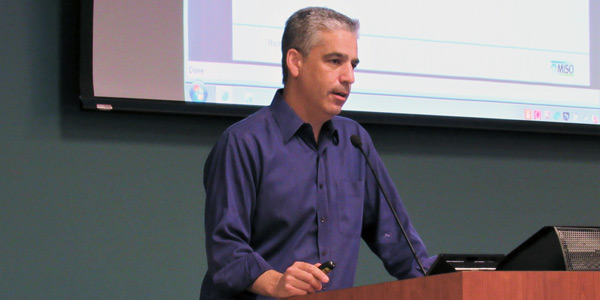By Amanda Durish Cook
CARMEL, Ind. — The Reliability Subcommittee’s effort to explore how MISO should address increasingly uneven availability of resources could revive a discussion on developing a capacity market divided by season, stakeholders learned last week.
MISO kicked off its “resource availability and need” effort last month with a white paper on changing availability and an announcement that it would devise specific rules to counter the effects of increasing generation retirements, poor outage coordination, growing volumes of emergency-only capacity and the rising use of intermittent resources. (See MISO Looks to Address Changing Resource Availability.)
During a May 3 RSC meeting, MISO Executive Director of Market Operations Jeff Bladen said the new effort has prompted some stakeholders to ask the RTO to revisit its 2015 proposal to create seasonal capacity auctions, a move that was put on indefinite hold last year after stakeholder pushback.
At the time, seasonal capacity auctions seemed like “a single point solution to a broader set of issues that called for a more holistic approach,” Bladen said, noting that the new effort wasn’t intended to preclude a re-examination of the possible need for the auctions.
Near-term Solutions
Bladen also said several stakeholders urged MISO to focus on near-term solutions to ensure that an adequate amount of resources is at the ready, including improving outage coordination, modifying the rules of emergency-only resource types and creating forecasts that provide a better picture of resource availability in the footprint.
A utility’s cash flow influences the lumping of outages, Bladen said, with fleet operators grouping outages when they expect low energy prices, especially in spring and fall.
“When prices are low, operators tend to take outages. It’s expected,” he said. “This is not as simple as, ‘well, everybody takes outages throughout the year.’ It’s much more complicated than that.” MISO said that most of its planned outages are scheduled less than a week before they are taken.
MISO might turn to a solution that requires more accountability from operators, Bladen said.
“Maybe there’s some expectation for generators to replace themselves [during an outage]? That’s pretty extreme,” Bladen said, stressing that MISO has not seriously discussed that measure.
Bladen said MISO could examine its existing load-modifying resource contracts to include staggering availability times and provide incentives to resources that offer during emergencies outside of summertime.
“Does it make sense to expect non-summer participation when it’s not compensated like in summer?” Bladen asked.
He pointed out that this summer, MISO faces an 80% chance of entering emergency conditions. (See MISO: Summer Reserves Adequate, but Emergency Likely.) He also said that a reduction in zonal resource credit offers has reduced the number of uncleared zonal resource credits in capacity auctions since the 2014/15 planning year.
“While we don’t think the platform is burning, the temperature is certainly rising,” Bladen said. “I want to be clear. The system is not unreliable. There’s just a better chance of emergencies.”
Storage Mentions
The Advanced Energy Management Alliance and other stakeholders called out MISO’s white paper for not explicitly mentioning the help energy storage could provide during tight operating.
Bladen said the omission was deliberate in order to remain technology- and resource-neutral.
“I would say that was intentional. We didn’t intend to reference technologies, but rather we were recognizing the resource availability profiles without going to where solutions could be found,” Bladen said.
Nevertheless, Bladen said MISO must consider the impacts that FERC’s Order 841 may have on its resource availability.
DTE Energy and the Organization of MISO States also asked the RTO to consider revising its loss-of-load expectation (LOLE) study process to include more availability risks associated with its resource mix.
Bladen said MISO envisions more stakeholder discussion before proposing changes to the LOLE study. He said altering study methods could produce a larger planning reserve margin requirement.
“It raises the prospect of socializing the risk by requiring everyone to procure more capacity,” Bladen said. “That’s a choice we can make as a community, but we have to be completely transparent about that choice.”
Consumers Energy’s Jeff Beattie cautioned MISO against risking some of its value proposition to its members by creating an insurance-sharing pool.
Bladen agreed that MISO needs to carefully consider balancing the sharing of resources in the footprint. “I’m glad you raised it because that’s something that needs to be front and center in the conversation,” he said.
He also said the RTO must also investigate shifting loss-of-load risk as part of resource availability. A recent renewable integration study by MISO found that as more intermittent renewable resources join the fleet, the loss-of-load risk becomes shorter but steeper, occurring later in the day after sundown. (See MISO Renewable Study Predicts Later Peak, Narrower LOLE Risk.)
Developing solutions to MISO’s resource availability issues could stretch well into 2019, Bladen said, and he expected that parts of the solution will be handled by the Market Subcommittee and Resource Adequacy Subcommittee as well as the RSC. He asked for more stakeholder opinion on what approaches the RTO should take.




